
What is Geo-Blocking and How to Bypass it On Sony Xperia 5 V? | Dr.fone

What is Geo-Blocking and How to Bypass it On Sony Xperia 5 V?
Have you ever entered a website and can’t access it because it is unavailable in your area? This is what geo-blocking means. If you want to know more about geo-blocking, you have come to the right article. This article provides the definition, symbols, function, type, and how to bypass a geo-blocked site.
Encryption is often used in geo-blocking as a means of protecting material that is restricted to users in just certain locations. In its long existence, the method has been met with several obstacles. These obstacles will be discussed in the next sections!

Part 1. What is Geo-Blocking?
This section will give you the definition of geo-blocking. It will also show how websites inform viewers that they are in geo-blocking areas.
Geo-blocking is the practice of restricting online access to certain users depending on where in the world they happen to be physically located. Telecommunications firms, websites, and other content providers and intellectual property owners often use this method for copyright protection. To monitor and enforce geo-blocks, databases that map out IP addresses’ geographical locations are often employed.
Understanding the Main Symbols and Elements
You sometimes can’t access a site because it isn’t available in your area. This is the main element carried by geo-blocking.
Every online-surfing tool has a unique identifier called “IP address”. The address can identify the Sony Xperia 5 V devices’ geographical location. When users access a website, their devices send their IP addresses to the online servers. The servers read if the IP addresses are included in the allowed list and determine whether to allow the visitors to view the content.
The visitors usually know they are geographically limited through the website’s displayed outcomes, a poster indicating that the service is unavailable in the location. Take the geo-banned access by Airbnb as an example below.
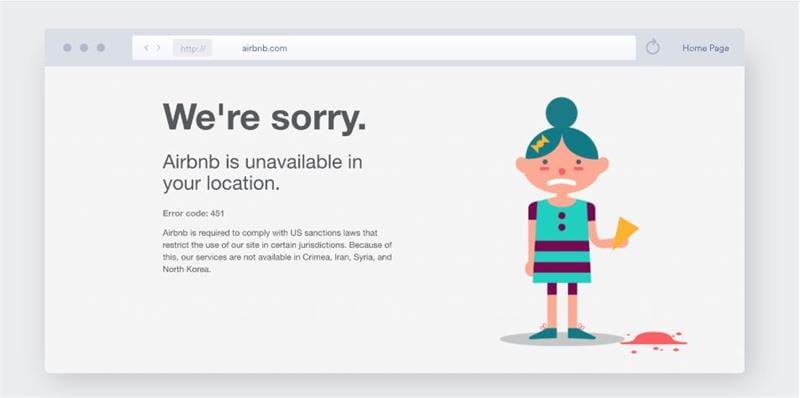
Although Airbnb has been criticized for posing a threat to the availability of low-cost lodging in metropolitan areas, it has proven to be a useful resource for travelers. However, not everyone can use it; for instance, it is unavailable in Iran due to US sanctions.
Part 2. How Does Geo-Blocking Work?
When a firm, rather than a government, is responsible for geoblocking, IP addresses are often the first line of defense. Your IP address is like a street address, revealing where you live.
IP addresses are numerical identifiers that distinguish each machine on the internet. Your computer’s IP address is sent to the server of the website you visit so that it may supply the required data.
You’ll be assigned an IP address when you sign up for an Internet Service Provider. It is possible to pinpoint the location of your device using its IP address, albeit the degree of precision may vary. Websites use the IP address to determine whether you can read their content. They will thus refuse your request if you are using an IP address that’s not on their approved list.
 Project Manager - Asset Browser for 3Ds Max
Project Manager - Asset Browser for 3Ds Max
Part 3. Common Types of Geo-blocked Content
The difficulty stems from legal hurdles, including copyrights, licenses, and territorial disputes. Certain streaming services may not make all of their offerings accessible in all regions, or a major online shop may restrict some of their offerings to customers in just one geographic area.
Youtube
Users who upload videos can restrict access to them in certain countries. This nearly usually indicates that a business has chosen that you shouldn’t be able to see a video because of where you are located.

Spotify
You may be trying to find a method to unblock Spotify because you want to listen to unavailable music in your country or because the app has been prohibited in your area.

Live Sports
Big events may be aired exclusively by one company, which means you may be forced to pay to access certain material or go through annoying subscription hoops.

Pandora
Do you want to tune in to this online radio and music station? You can’t access it anywhere in Europe because of a regional firewall.

Porn sites
Artists from porn sites can now geo-block their movies, much like YouTube users do. Some porn sites have been outlawed in several countries, including Egypt and Pakistan, where the vast majority of the population resides.

Amazon
Amazon Prime geo-blocks other services as well as its streaming content. Games, ebooks, software, audiobooks, and other digital materials like TV and movies may be licensed and copyrighted. Amazon Prime prevents certain VPN IPs from accessing foreign content, including Netflix.

Part 4. Tips to Bypass Geo-Blocking
While certain sites may be blocked in your country, there are still methods to access the full functionality of the web. What exactly are they, and how do you go about getting them? Here’s more reading material.
Method 1. Use Smart Domain Name System (DNS)
Clever DNS can evade geoblocking if your smart TV, streaming box, or gaming console doesn’t support VPNs or proxy servers. Some home routers can generate VPN connections, but not all.
By changing your DNS address, clever DNS may alter your device’s virtual location. Smart DNS replaces your Internet provider’s DNS server. Netflix.com’s IP is not netflix.com. You’ll acquire the smart DNS provider’s transparent DNS proxy IP. Netflix thinks you’re in the US since this proxy server is.
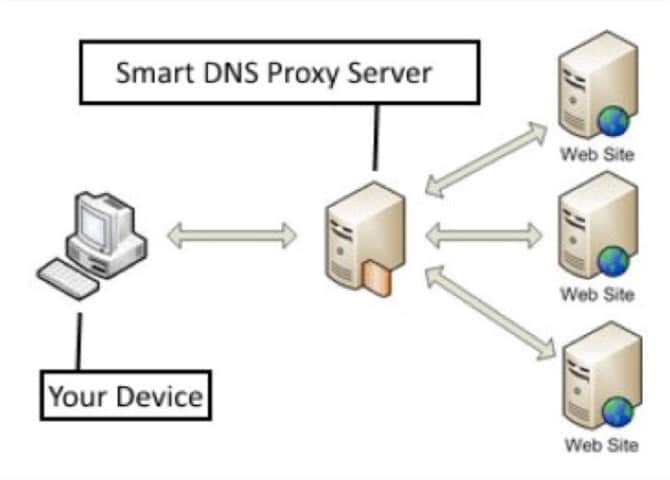
Method 2. Connect to Proxy Servers
Rather than connecting you directly to the server housing the material you want, a proxy server functions as an intermediary. A proxy server does what its name implies: it acts on your behalf to get access to the data and then forwards it to you. Proxy servers, especially those in foreign countries, may be used to get around geographical restrictions.
Depending on the kind of proxy server you use, you may or may not be able to conceal your IP address when surfing the web. Proxy servers are available online and may be accessed from any web browser. Setting up a proxy server is easy, but your activity may still be vulnerable since proxies don’t secure your data.
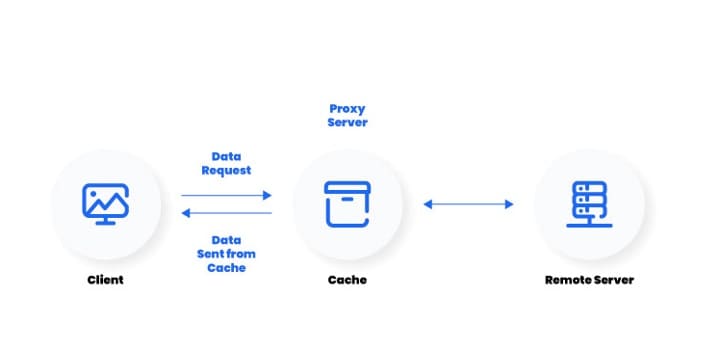
Method 3. Use the Tor Browser
In addition to using a VPN, you may use the anonymous Tor browser. The Tor browser links to the Tor network, a collection of computers that collaborate to conceal your online footprint by relaying your traffic via several intermediary nodes.
Tor employs a technique called “onion routing” to conceal its users’ identities. Since more time is required to traverse these additional levels, your internet speed may suffer as a consequence.
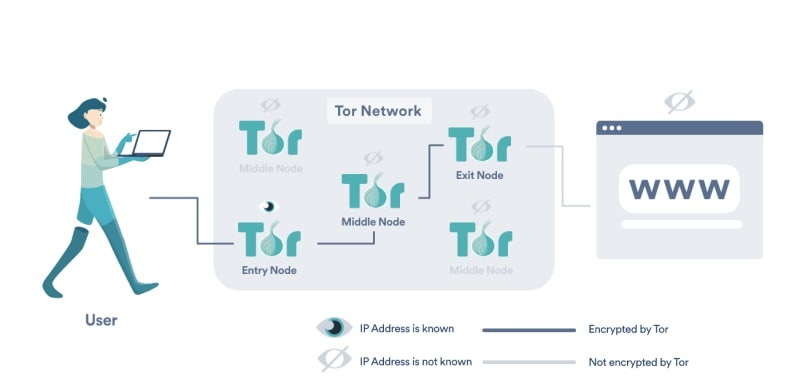
 HD Video Converter Factory Pro
HD Video Converter Factory Pro
Method 4. A Good VPN Connection
A virtual private network (VPN) may hide your online identity and protect your data by encrypting your connection. VPNs allow you to get around geographically restricted material by redirecting your connection via a server in another country. This will allow you to connect to VPN servers in other countries, such as the United States, the United Kingdom, or Australia.
With effective VPN tools , you can surf the web anonymously, unblock geo-blocked content, and watch your favorite programs abroad. There are several advantages to utilizing a VPN, particularly when you travel or use public Wi-Fi, and they are simple to set up.

Part 5. FAQs About Geo-Blocking
Here are the answers to four questions that you might ask about geo-blocking.
1. Is Geo-Blocking Legal?
Yes. It’s legitimate. Limiting access to websites and services based on a user’s location is lawful. This practice is routinely used in nations like China to prevent citizens from seeing politically sensitive material. Legal arrangements, such as licensing agreements, may also be enforced by geo-blocking.
2. Is Bypassing Geo Blocking Illegal?
It depends. Depending on the situation, the nation, the purpose of the use, and the technique used, geo-blocking circumvention may be against the law. Copyright regulations prohibit users from accessing material beyond its designated location, yet many providers are reluctant to penalize users for doing so.
3. What’s the Difference Between Geo-Fencing and Geo-Blocking?
Geo-fencing is to create digital fences on which to base real-world judgments about where to go. One may draw a boundary around it using longitude and latitude lines on a map to easily establish who is permitted inside a certain region. Restricting access to material based on a user’s physical location is called “geo-blocking.”
4. Is Geo-Restricted the Same as Geo-Blocking?
They are the same. Restricting a user’s ability to access certain online resources depending on their location is known as geo-blocking or geo-restriction. To safeguard their license agreements, foreign media streaming firms often use the practice of geo-blocking.
Conclusion
For several reasons, media and content producers use geo-blocking. Although geo-blocking is unlikely to ever go out of style, there are techniques to circumvent it. Use a virtual private network (VPN) to bypass geo-restrictions on the material you want to watch. Using a Virtual Private Network (VPN), a proxy server, the Tor network, etc., your online location may be hidden or masked.
Geo-blocking controls. It’s both useful and abused. Website banning discriminates and manipulates. Geography may be annoying and frustrating. Sadly, they may always be in style. You don’t have to tolerate them!
Prevent Cross-Site Tracking on Sony Xperia 5 V and Browser
Have you ever wondered why you get the advertisements of the websites you visited a few minutes ago on your social media sites? Here comes to Cross-Site Tracking, also termed CST, and it is a process where third-party cookies and sites track your browser history.
![]()
The CST process is like invading your privacy by collecting your browser history and personal information. So, to prevent these services, there are several ways by which you can cross-site tracking on your system as well as Sony Xperia 5 V phone browsers. Keep reading to learn how to stop cross-site tracking on both Sony Xperia 5 V and browser.
Part 1: Why Do We Need to Stop Cross-site Tracking?
Cross-site Tracking is all about collecting your browsing data and other information for advertising purposes. Though the process can prove convenient for many as it provides additional information about the products and services you have searched for and offers tailor-made content, it is intrusive and about breaching your privacy.
Cross-site tracking collects information about your browsing history. The third-party cookies also monitor the content type you have visited and your personal information, which is risky.
Besides invading privacy, the CST also poses several other issues. Based on your browsing history, additional content you have not asked for is loaded on your visited sites, slows down the page loading process, and puts an extra burden on your battery. Moreover, too much-unwanted content can interfere with the basic information you are looking for.
So, it is always better to prevent cross-site tracking for all the above and more reasons.
Further reading: A detailed guide on faking location in Mozilla Firefox . Don’t worry about your location privacy anymore!
Part 2: Can Private Browsing be traced?
Yes, private browsing can be traced. When you work in private browsing mode, the web browser does not save the browsing history, which means that anyone who uses your system will not check your online activities. But websites and cookies can track your browsing history as well as other information.
Part 3: How to Disable Cross-website Tracking on Safari for iOS Devices?
Safari is the most commonly used platform by iOS users. So, to prevent CST for Safari on your iOS devices and Mac systems, below is a complete guide.
Deactivate Safari cross-website tracking for iPhone & iPad
Safari cross-site tracking can be prevented using the below steps on your iPhone and iPad.
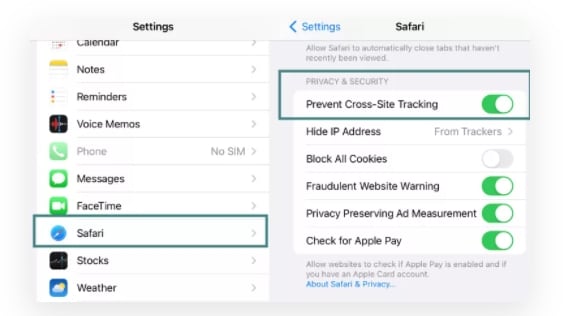
- Step 1. Launch the Settings app on your iOS device.
- Step 2. Find the Safari option by scrolling down the menu.
- Step 3. Move the slider to turn on “Prevent Cross-Site Tracking” under the PRIVACY & SECURITY option.
Deactivate Safari cross-website tracking for Mac
Use the steps below to turn off cross-site tracking on Safari on your Mac systems.

- Step 1. On your Mac system, open the Safari app.
- Step 2. Move to Safari > Preferences > Privacy
- Step 3. Enable the “Prevent cross tracking” option by clicking on the box next to it.
Part 4: How to Disable Cross-site Tracking on Google Chrome
Chrome is used widely on Windows systems and Android devices, and to prevent the CST from your browser, a detailed guide is given below.
Enable “Do Not Track” on Google Chrome for Android
- Step 1. On your Sony Xperia 5 V, open the Chrome app.
- Step 2. At the right side of the address bar, click on the More option and choose Settings.
- Step 3. Choose the Privacy option from the Advanced tab.
- Step 4. Click on the “Do Not Track” option to turn on the feature.

Enable “Do Not Track” on Google Chrome for Computer
- Step 1. Launch Chrome on your system, and from the menu at the upper-right corner, click on the Settings option.
- Step 2. From the “Privacy and Security” tab, choose the “Cookies and other site data” option.
- Step 3. Tap and enable the slider next to “Send a “Do not track” request with your browsing traffic.”
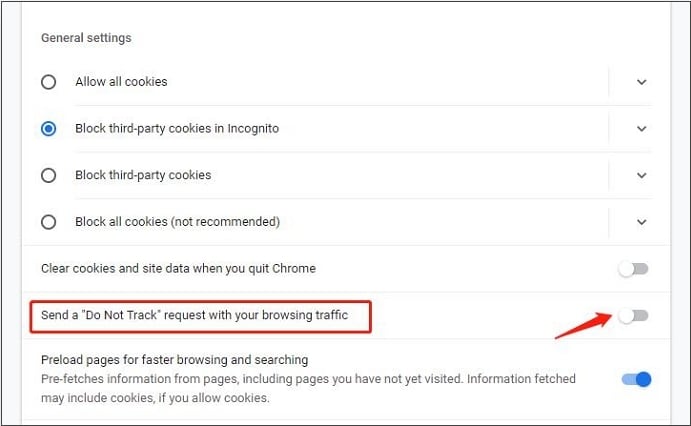
Part 5: Recommended Solution: Fake a Location to Stop Cross-Site Location Tracking Using Dr. Fone
What if you let the sites and cookies track your phone location without worrying about your privacy? Yes, it can be done by spoofing your location. So, if you set a fake location while browsing the internet, you will not have to worry about cross-site tracking, as anyways, the sites and cookies will get misled browsing information that cannot harm you in any manner.
Setting a fake location on your iOS devices, a professional tool is needed, for we recommend Wondershare Dr.Fone - Virtual Location as the best tool. Using this Android and iOS-based software, you can set any fake GPS location on your device. The tool is simple to use and does not require any mastery of technical know-how.
Key features
- Simple tool to teleport to any GPS location in a single click.
- Allows simulating GPS movement along the route.
- All popular models of Android and iOS devices are compatible.
- Compatible with all location-based apps on your phone.
- Compatible with Windows and Mac systems.
Here is a video tutorial for you to take an overview of how to use Dr.Fone - Virtual Location to fake location on your Android and iOS devices.

Steps to set fake location on your Android and iOS devices using DrFone-Virtual Location
Step 1. Download, install and launch the software on your Windows or Mac systems. On the main software interface, choose the Virtual Location option.

Step 2. Connect your iPhone or Android device to your system using a USB cable and then tap on the Get Started option on your software interface.
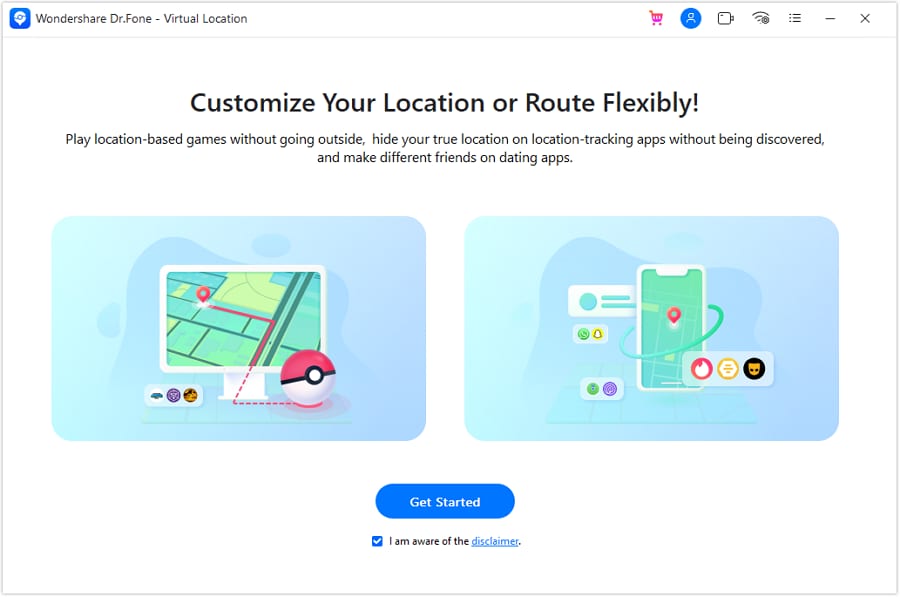
Step 3. A new window on the software interface will open, showing your connected phone’s real and actual location. If the detected location is incorrect, click on the “Center On” icon to display the right device location.
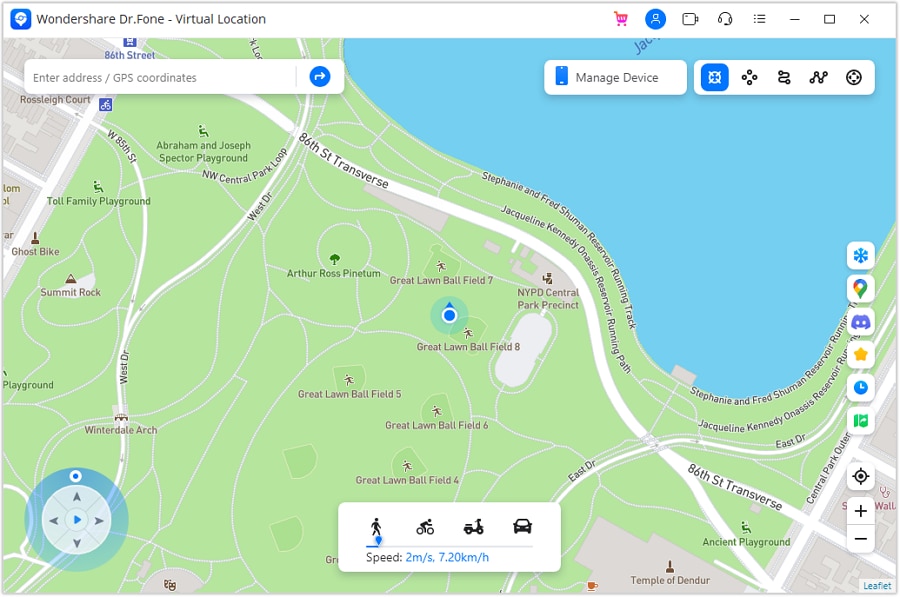
Step 4. Next, you need to activate the “teleport mode” and click o the 3rd icon at the upper-right corner.
Step 5. Next, you have to enter now the fake location to which you wish to teleport to at the upper-left corner. Click on Go.
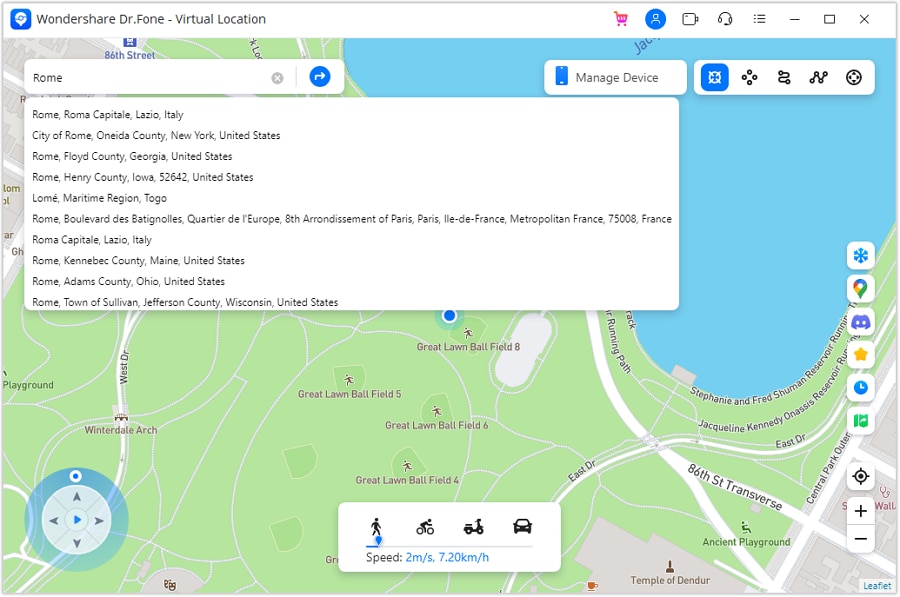
Step 6. Finally, tap on the Move Here button and the new fake location for your connected Android or iOS device at the pop-up box.
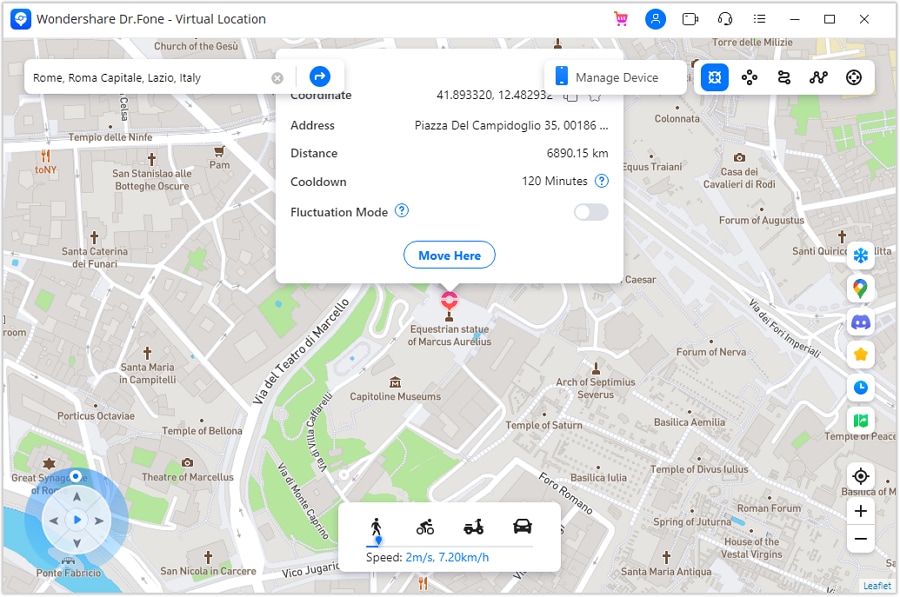
Check the new location of your phone from the app.
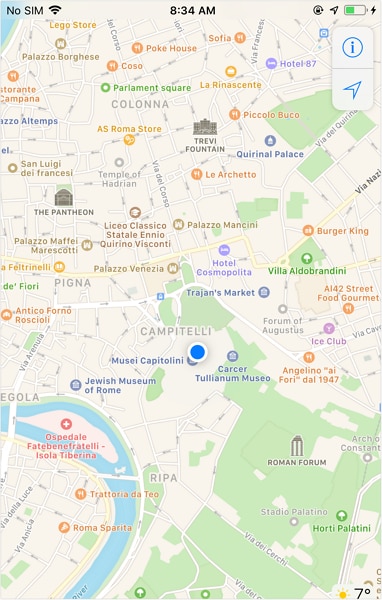
Wrap it up
Preventing Cross-site tracking can be done on different browsers and devices using the guides listed in the above parts of the article. Settings a fake location for your device using Dr. Fone-Virtual Location is another interesting way to prevent tracking your browsing history by spoofing the sites and cookies. Setting a fake place will not only avoid monitoring your browsing history but will also work with all location-based apps on your phone.

A Detailed VPNa Fake GPS Location Free Review On Sony Xperia 5 V
As I stumbled upon this query that has been recently posted on a leading online forum, I realized that so many people don’t know about the VPNa Fake GPS app. If you are also an Android user who would like to change your device’s location, then VPNa Fake GPS APK might meet your requirements. Since there are so many location spoofing tools out there, I decided to give VPNa Fake GPS location app a try and have come up with its genuine review here.
Part 1: VPNa Fake GPS Location Free: Features, Pros, Cons, and More
Developed by XdoApp, VPNa Fake GPS is a popular application that can change the location of your Android virtually. Using it, you can spoof your device location to almost anywhere in the world. This would be reflected in almost all the installed gaming, dating, and other apps on your phone automatically.
- You can look for any location on the interface of VPNa Fake GPS by entering keywords (name/address) or the exact coordinates (longitude and latitude) of the place.
- To fake GPS using VPNa, you would be presented with a map-like interface and can easily move the pin around to spoof your location to an exact place.
- Besides that, if there is a location that you change frequently, then you can also mark it as a favorite.
- The VPNa fake GPS location APK would also maintain the record of the past locations that you have spoofed.
- Using VPNa Fake GPS, you can change your location as many times as you want without paying anything.
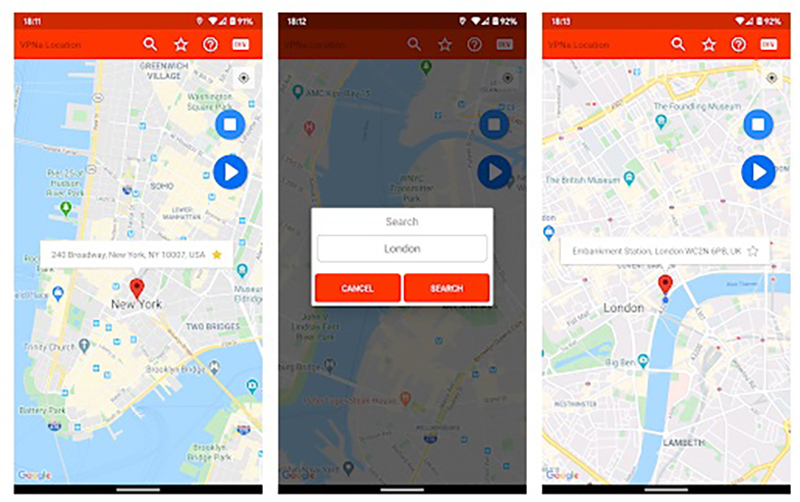
Pros
- The changed location would be reflected in almost every dating and gaming app.
- The basic version of VPNa Fake GPS is available for free and doesn’t need root access.
- The overall interface of VPNa Fake GPS APK is pretty user-friendly and smooth.
Cons
- At times, some advanced apps (like Pokemon Go) can detect it and might get your account banned.
- While using the free VPNa fake GPS version, you would get in-app ads.
- Sometimes, the location is not spoofed even after consecutive attempts.
Pricing: While you can access the basic version of VPNa Fake GPS for free, you can pay $2.99 for an ad-free experience.
Compatibility: Android 4.4 and newer versions
Play Store Rating: 3.6/5
Important Note
Don’t get confused by the name of VPNa Fake GPS as it is not a VPN, but only a location spoofing solution. If you are looking for a VPN app, then you should consider other options.
Final Verdict
Overall, VPNa Fake GPS location free is worth a try. It is pretty lightweight, easy-to-use, and supports almost all the prominent apps. Since you don’t have to pay anything to use VPNa Fake GPS, you can give it a try, and explore it on your own.
Part 2: How to Use VPNa Fake GPS Location Free to Spoof Your Location?
Now when you know how VPNa fake GPS Location Free works, let’s quickly understand how to use it to change the location on any Android phone.
Step 1: Enable Developer Options on your phone
To set up a mock location app, you need to first enable the Developer Options on your device. To do this, just go to its Settings > About Phone and tap on the “Build Number” feature 7 consecutive times.
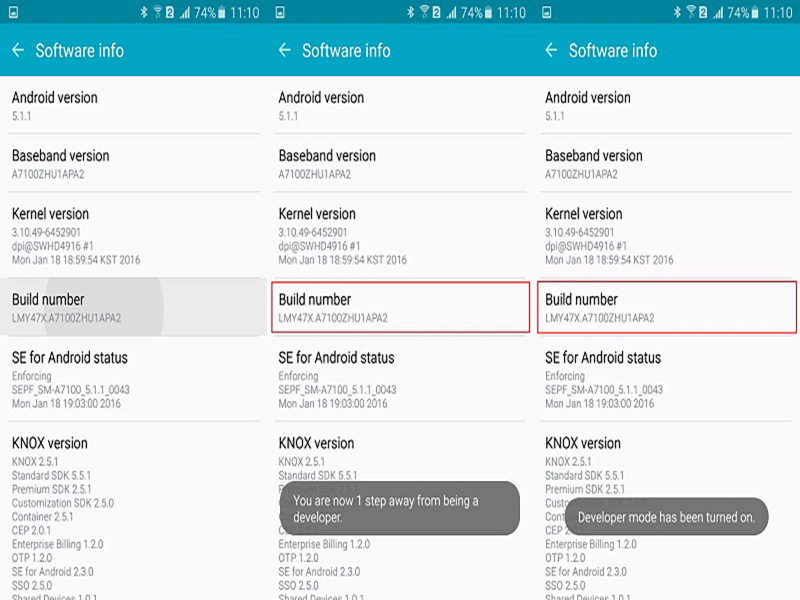
Once it is done, go to its Settings > Developer Options and turn on the option to set a mock location on your phone.
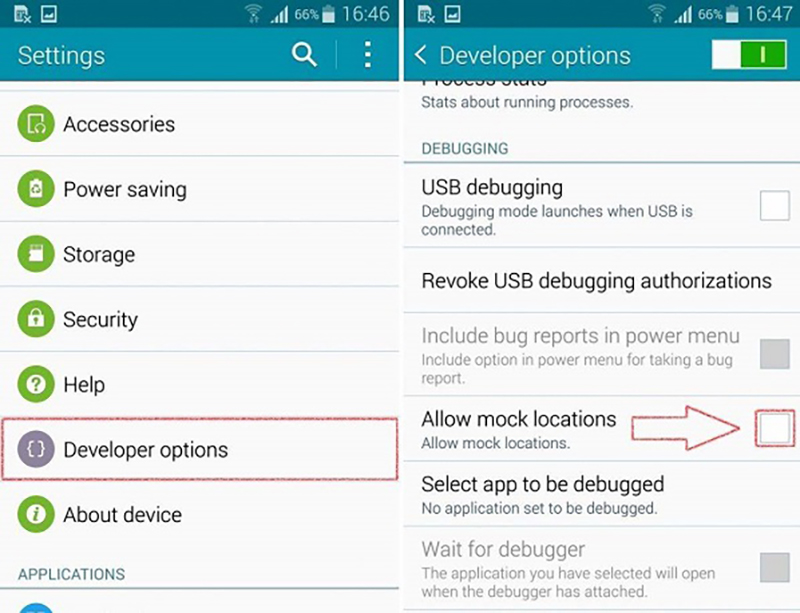
Step 2: Make VPNa Fake GPS as the default mock location app
Now, you can just go to the Play Store and download the VPNa Fake GPS Location app on your device. After the app is installed, you can just go to its Developer Options again and set it as a default mock location app.
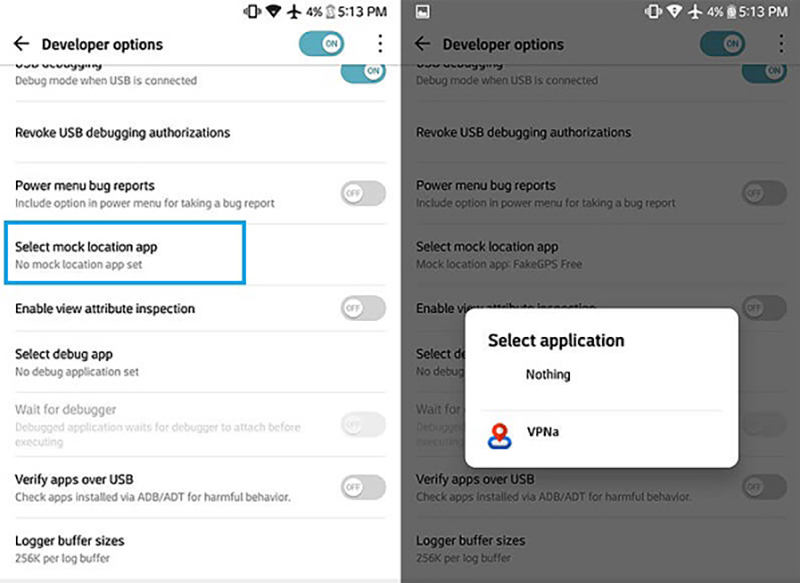
Step 3: Spoof your Android’s location
That’s it! Whenever you wish to change the location of your device, simply launch VPNa Fake GPS APK. You can enter any location’s address or coordinates in the search bar and wait for it to be loaded on the interface.
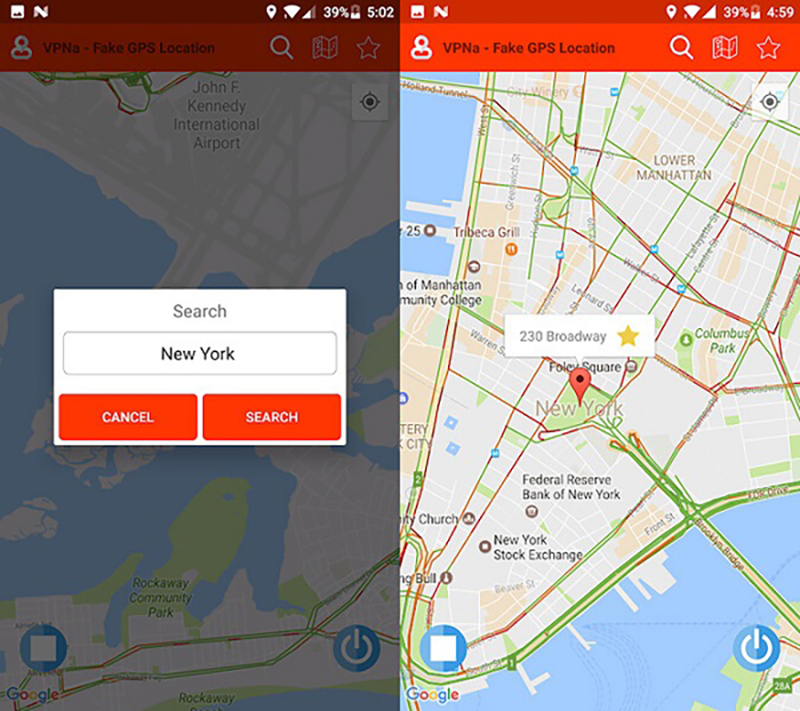
Later, you can move the pin around and drop it anywhere you like. Tap on the Start button and confirm your choice to spoof your device’s location.
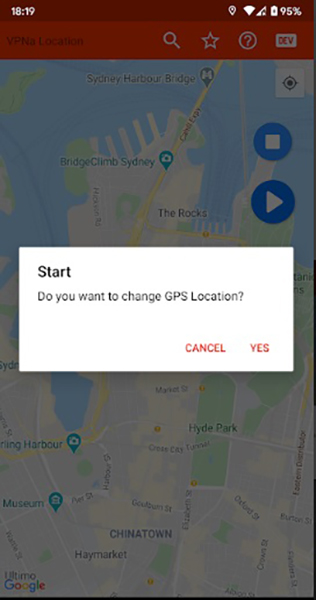
Part 3: Bonus Tip: How to Spoof an iPhone Location without Jailbreak
While Android users can take the assistance of VPNa Fake GPS, iOS users often find it hard to change their device location. Well, in this case, you can consider Dr.Fone - Virtual Location(iOS) . It is a user-friendly application that can spoof your iPhone location to any other place by entering its address or exact coordinates. Besides that, you can also simulate the movement of your device between different spots.
Step 1: Connect your iPhone and launch the tool
At first, you can just connect your iPhone to your computer and launch the Dr.Fone toolkit. Select the “Virtual Location” feature from its home and click on the “Get Started” button.

Step 2: Look for a location to spoof
The application will automatically detect your device’s location and would display it. To change it, click on the Teleport Mode icon from the top, and enter the address/coordinates of the place in the search bar.

Step 3: Change your iPhone’s location
After entering the target location, the interface would also change. You can move the pin, zoom in/out, and drop it to the designated place. In the end, just click on the “Move Here” button to spoof your iPhone’s location.

This brings us to the end of this detailed VPNa Fake GPS Location Free review. To help you use the VPNa Fake GPS APK, I have listed its features, pros, cons, and even a detailed tutorial. On the other hand, if you are an iPhone user, then you can simply use Dr.Fone - Virtual Location(iOS) and change your device’s location to anywhere you want.
- Title: What is Geo-Blocking and How to Bypass it On Sony Xperia 5 V? | Dr.fone
- Author: Ava
- Created at : 2024-08-01 21:52:25
- Updated at : 2024-08-02 21:52:25
- Link: https://fake-location.techidaily.com/what-is-geo-blocking-and-how-to-bypass-it-on-sony-xperia-5-v-drfone-by-drfone-virtual-android/
- License: This work is licensed under CC BY-NC-SA 4.0.
 OtsAV DJ Pro
OtsAV DJ Pro

 CalendarBudget - Monthly subscription membership to CalendarBudget via web browser or mobile app. Support included.
CalendarBudget - Monthly subscription membership to CalendarBudget via web browser or mobile app. Support included.  OtsAV Radio Webcaster
OtsAV Radio Webcaster
 OtsAV TV Webcaster
OtsAV TV Webcaster With Screensaver Wonder you can easily make a screensaver from your own pictures and video files. Create screensavers for your own computer or create standalone, self-installing screensavers for easy sharing with your friends. Together with its sister product Screensaver Factory, Screensaver Wonder is one of the most popular screensaver software products in the world, helping thousands of users decorate their computer screens quickly and easily.
With Screensaver Wonder you can easily make a screensaver from your own pictures and video files. Create screensavers for your own computer or create standalone, self-installing screensavers for easy sharing with your friends. Together with its sister product Screensaver Factory, Screensaver Wonder is one of the most popular screensaver software products in the world, helping thousands of users decorate their computer screens quickly and easily. Simple and intuitive video editing
Simple and intuitive video editing Any DRM Removal for Win:Remove DRM from Adobe, Kindle, Sony eReader, Kobo, etc, read your ebooks anywhere.
Any DRM Removal for Win:Remove DRM from Adobe, Kindle, Sony eReader, Kobo, etc, read your ebooks anywhere.





 PearlMountain Image Converter
PearlMountain Image Converter Glarysoft File Recovery Pro Annually - Helps to recover your lost file/data, even permanently deleted data.
Glarysoft File Recovery Pro Annually - Helps to recover your lost file/data, even permanently deleted data.